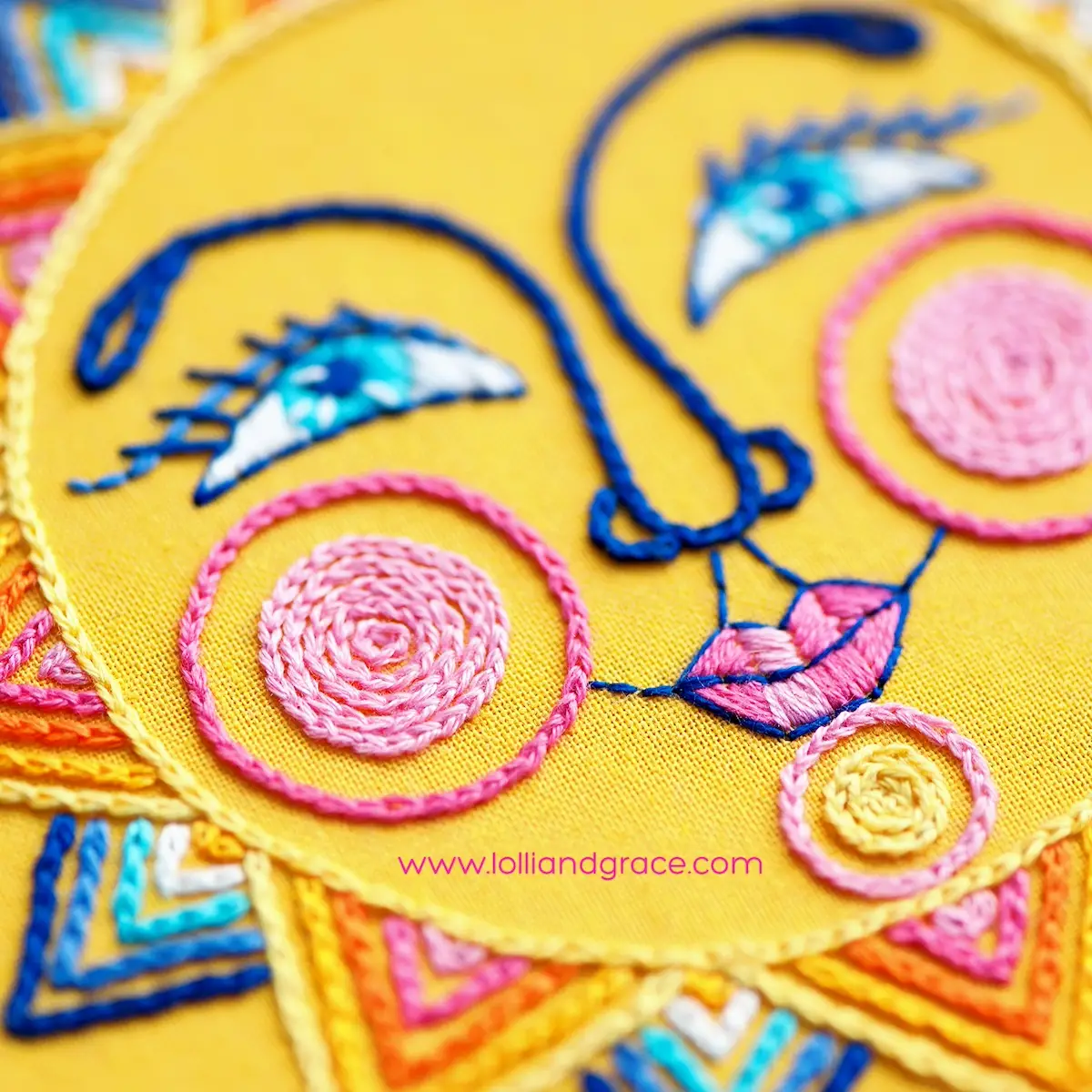Anne Oliver has been crafting for as long as she can remember—starting with a crackle-painted preschool jar and evolving through needlepoint, cross stitch, doll-making, and finally finding her happy place in embroidery. Her bold, colorful designs and wool felt creations are filled with joy, texture, and a dash of whimsy, all rooted in a lifelong love of making things by hand.
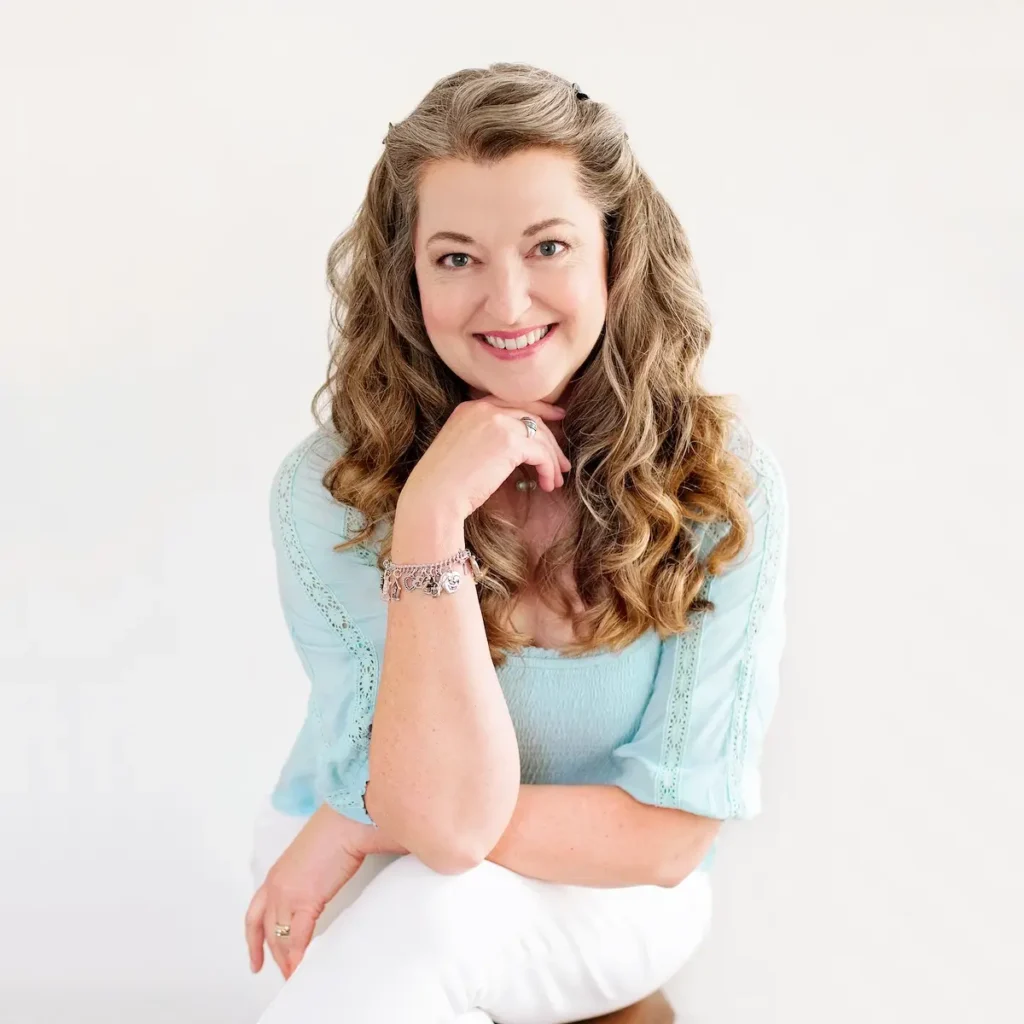
How did you find yourself on an artist’s path? Always there? Lightbulb moment? Dragged kicking and screaming? Evolving?
I feel like I have always been enamored with “crafting,” even as a young child.
I clearly remember the first craft project I did in preschool – both the project itself (a little jar we painted with paint+glue that crackled as it dried – so cool!) and the wonderful feeling of how fun it was to “make art.”
I spent much of my later childhood drawing, and that was a great foundation for everything that came later. I did needlepoint in my pre-teen years, I cross stitched in my college years, and then I started painting furniture, murals, and clothes.
As an Amazon Associate I earn from qualifying purchases. Read more about our affiliate linking policy.
I taught myself to knit (which is when I fell in love with colorful fibers and interesting textures). It wasn’t until later that I picked up embroidery and wool felt when I started designing dolls.
I LOVED creating the dolls, but I absolutely detest all of the hand-tiring work of stuffing them (kind of crucial to doll-making, lol), so I gradually moved over to embroidery. Here I am, and I couldn’t be happier!
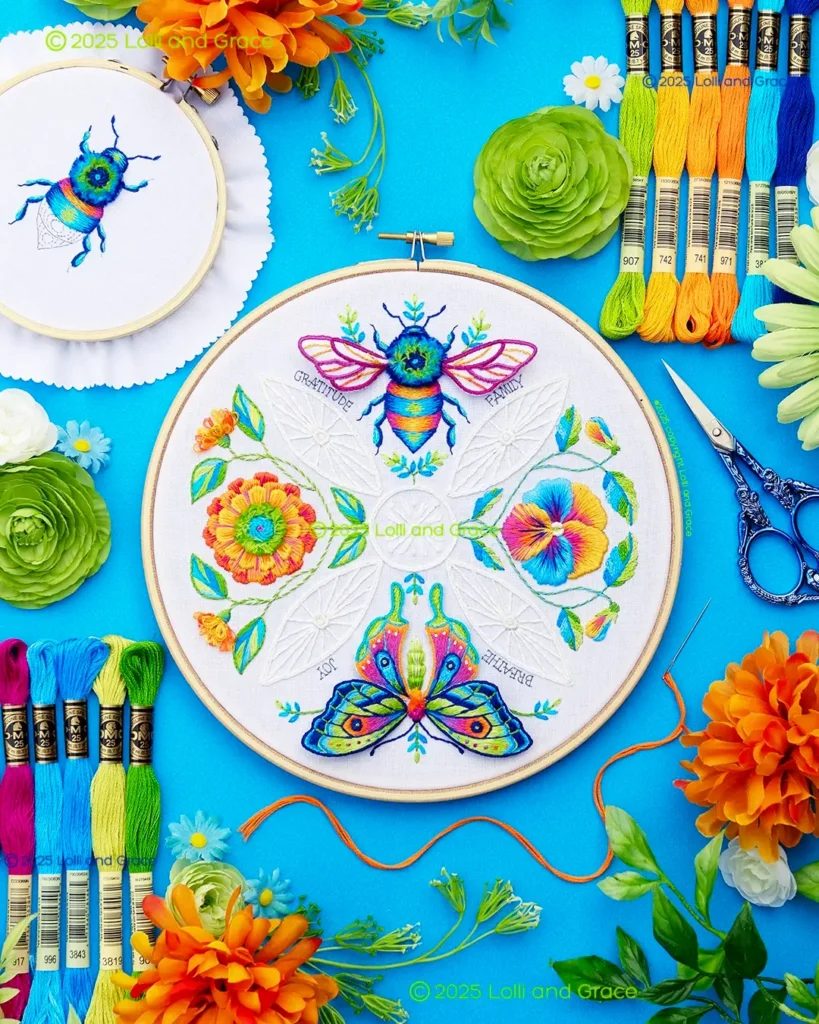
What techniques are used to create your art?
I am a hand embroidery pattern and kit designer, so that means choosing threads, fabrics,and techniques to create bold, vibrant designs in stitches.
I also create kits/patterns for wool felt ornaments year-round, and the addition of the felt is a wonderful way to add even more color and texture to my designs. Plus, I have a soft spot and deep love for wool felt ornaments, because I have such good memories of making them with my mom and sister when I was a child. I still have several of those ornaments we made, and they hang on my tree every year.
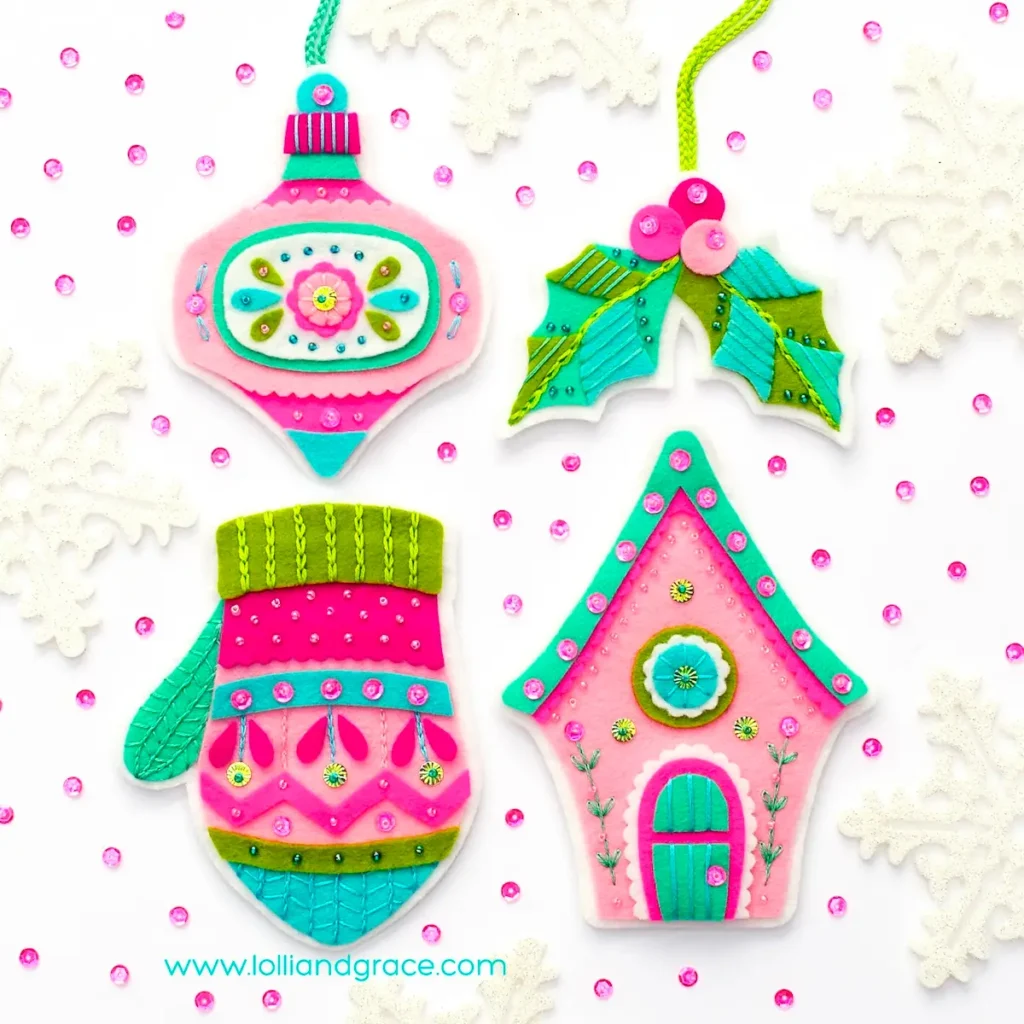
Is your work more content-driven or process-driven? Does an idea inspire a work of art, or do the materials launch an idea?
Both, really. Sometimes I’ll see an image or piece of art or nature that will immediately spark an idea for a new design, or perhaps it’s a color palette that makes me want to sit down and create something that uses those colors.
I also like to use color to push me out of my comfort zone. Some of my favorite designs are ones where I was initially uncomfortable with the colors.

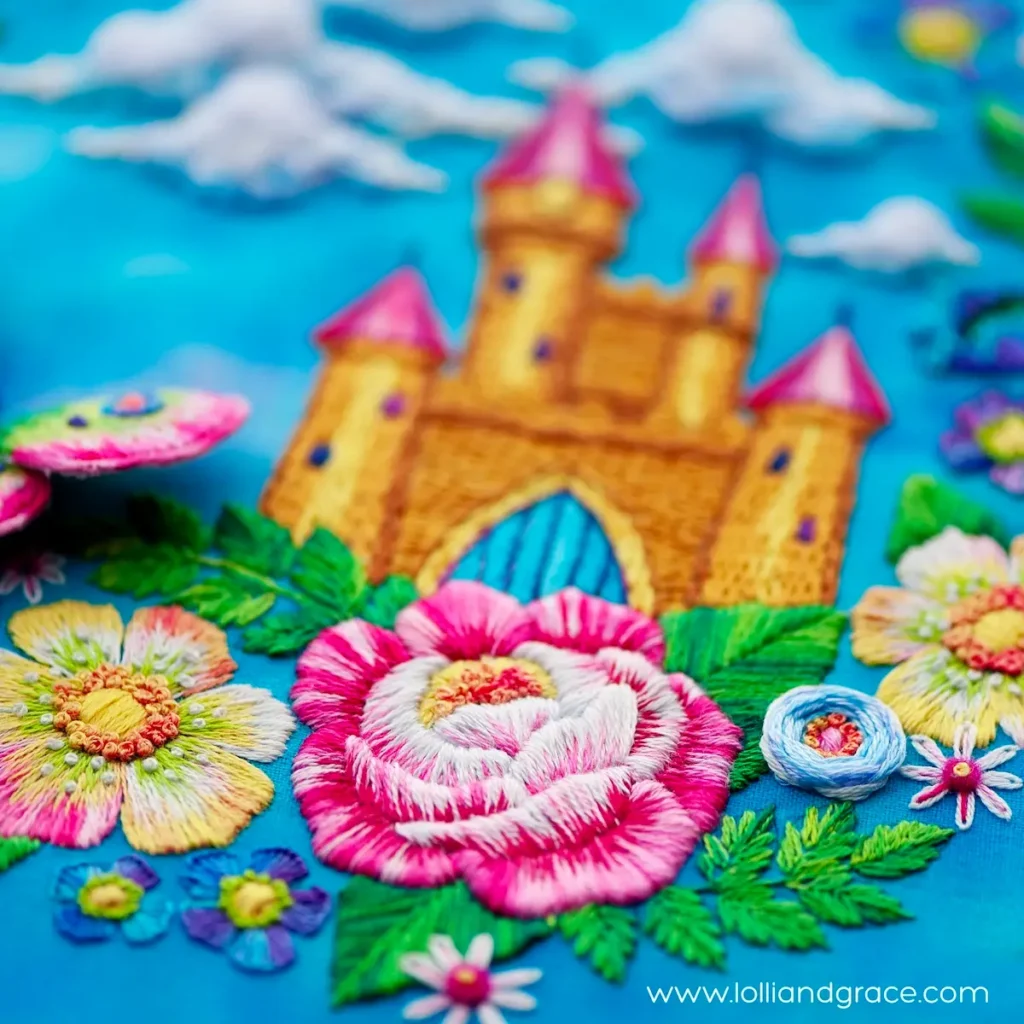
Do you plan your work out ahead of time, or do you just dive in with your materials and start playing?
I’m very much a planner.
I love to have a drawing and a (relatively) finished design before I ever start stitching. I generally have an idea for the stitches I want to use, but I do love to experiment with new techniques to keep it fresh.
I always keep several practice hoops ready so that I can play with new stitches and colors.
Do you have a dedicated space for creating? If so, what does it look like?
I am very lucky to have a room that is my dedicated workspace. I have a small-ish table (it was actually my college drafting table) with at least four light sources over it where I stitch everything.
I have another area where my computer lives. I spend a lot of time working on my designs in Illustrator, so a big monitor and a comfortable chair is essential for me.
Scraps. Saver? Or be done with them?
When it comes to thread scraps, I’ll be honest…I throw them away! I know a lot of people come up with so many creative things to do with their ORTS (orphan random thread scraps), and for years I tried to keep them.
The way I work, it’s generally better for me to start with longer threads as I stitch. The day I let go of the guilt and stopped trying to keep every random length of thread and just threw them in the trash was a great day, lol. So much less stress about it!
Do you use a sketchbook, journal, or technology to plan or keep track of ideas? How does that help your work develop?
I do keep a sketch book for when ideas strike. These are always super-quick sketches and lots of bizarre notes – basically a brain dump of whatever design has popped in my head. Sometimes these ideas get made; often they do not.
When is your most productive creative time?
Sometimes it just depends.
Early in the day is good for getting the work done that I “have” to do (bookkeeping, taxes, re-stocking kits), so I can “reward” myself with the actual making that is so fun – picking colors for a new design, stitching, adding sequins, whatever.
How often do you start a new project? Do you work actively on more than one project at a time?
Most often I like to have one project at a time, since I feel more focused that way. But, sometimes I need to have multiple designs going all at once. But really, I’m better when it’s one at a time.

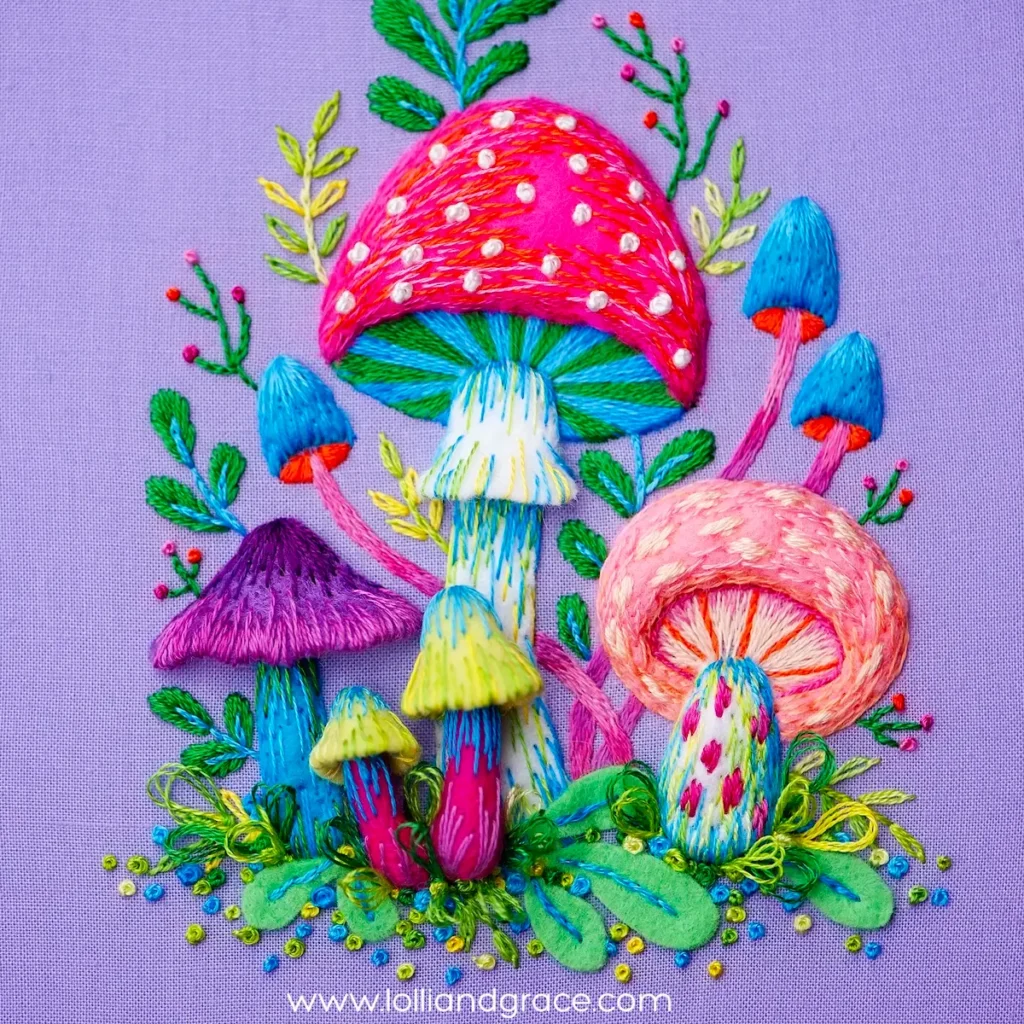

Can you tell us about the inspiration and process of one of your works? How does a new work come about?
One of my favorite designs took me, well, years.
I had an idea for a “window” type of embroidery with one layer on top that is cut, through which you could see “inside.” I knew I wanted to do a terrarium, and I spent SO MUCH TIME on it. I had the whole design drawn, colors and stitches chosen, and I had even gotten a good bit into actually stitching both hoops. But I just could not figure out a simplified way to make the window part of it work.
Part of my design process is not just creating the design so the end product looks nice, but creating it in a way that is teachable. I need to be able to write the directions in a pattern so that people can re-create what I’ve done for themselves. If it’s too complicated and laborious, it’s not going to be enjoyable for everyone. I was so discouraged that I put it all in a drawer and figured that idea just wasn’t going to happen.
About 2-3 years later, I was randomly thinking about that abandoned design, and suddenly I knew how I could make it work easily. About the same time I came across a color palette that was really exciting to me, albeit (as I mentioned above) way outside of my usual choices – aka not in my comfort zone. When I started working on a terrarium design again (new design, new hoops, new colors), everything just came together so easily, and the Toadstool Terrarium design is now one of my most popular kits.
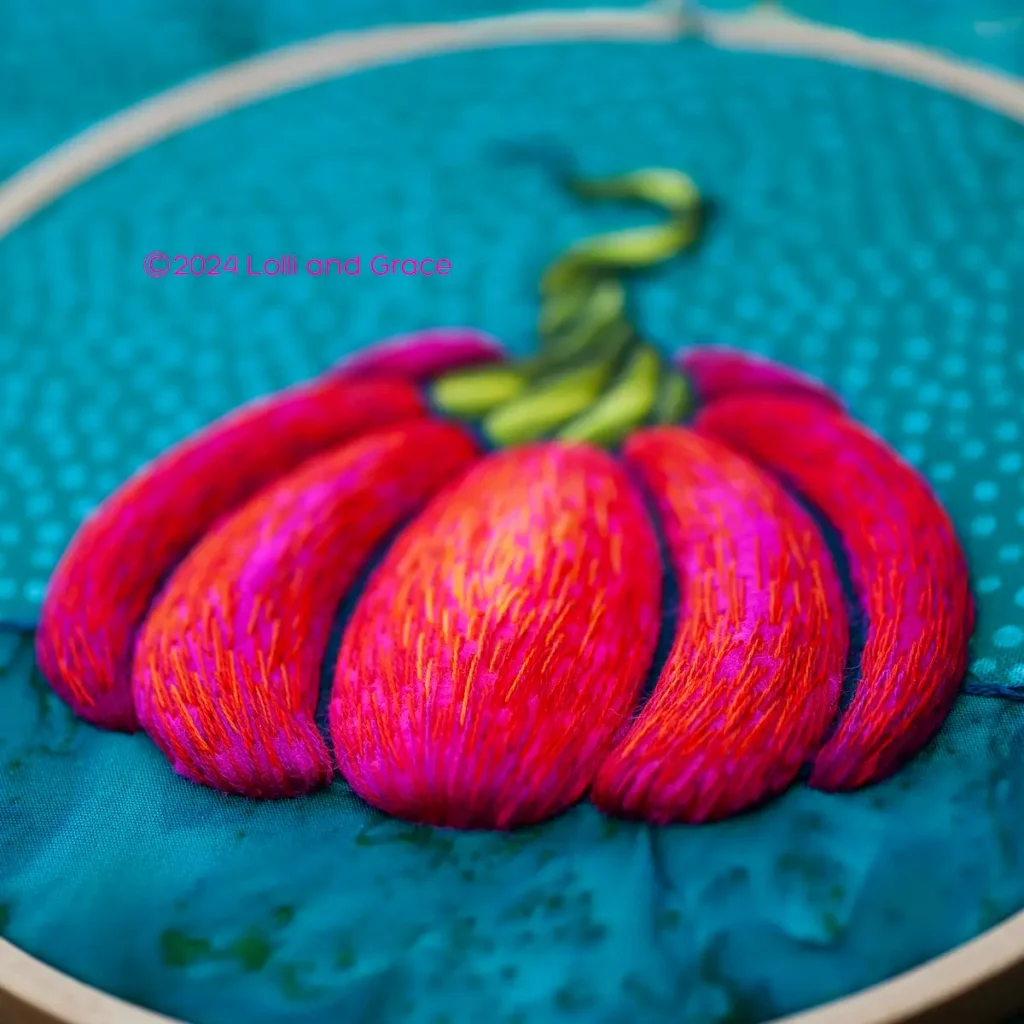
Which part of the design process is your favorite? Which part is a challenge for you?
Colors – it’s definitely picking the colors. I get excited about that part every single time!
What’s the best piece of advice you’ve received?
Something I learned over the years is that my/our mistakes are absolutely the most helpful part of the process.
The successes may seem easy, but it’s the mistakes where we really learn and push ourselves.
The whole process of the Toadstool Terrarium design that I mentioned above is a good example of that. My initial attempts were all just… wrong. Having gone through that process earlier – failing at it – is what made my later attempt successful. Learning best from our mistakes isn’t just for designers. Even for someone who stitches for pleasure, getting it wrong at first is really the best way to make it better in the end.
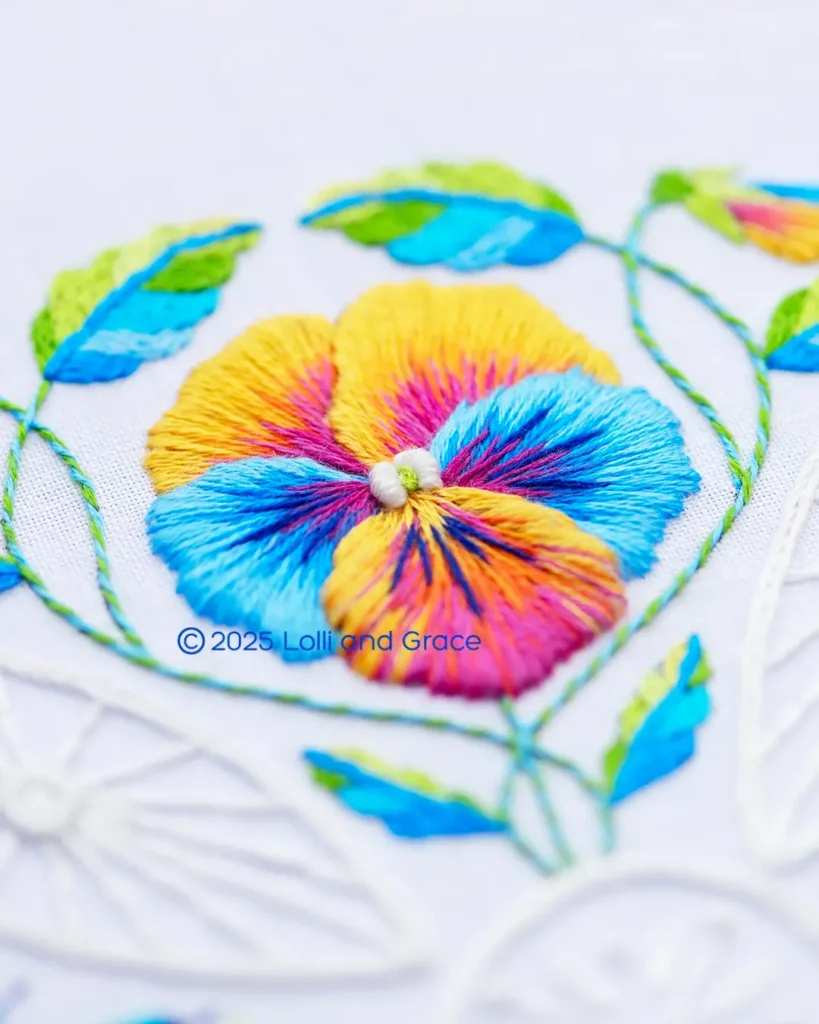
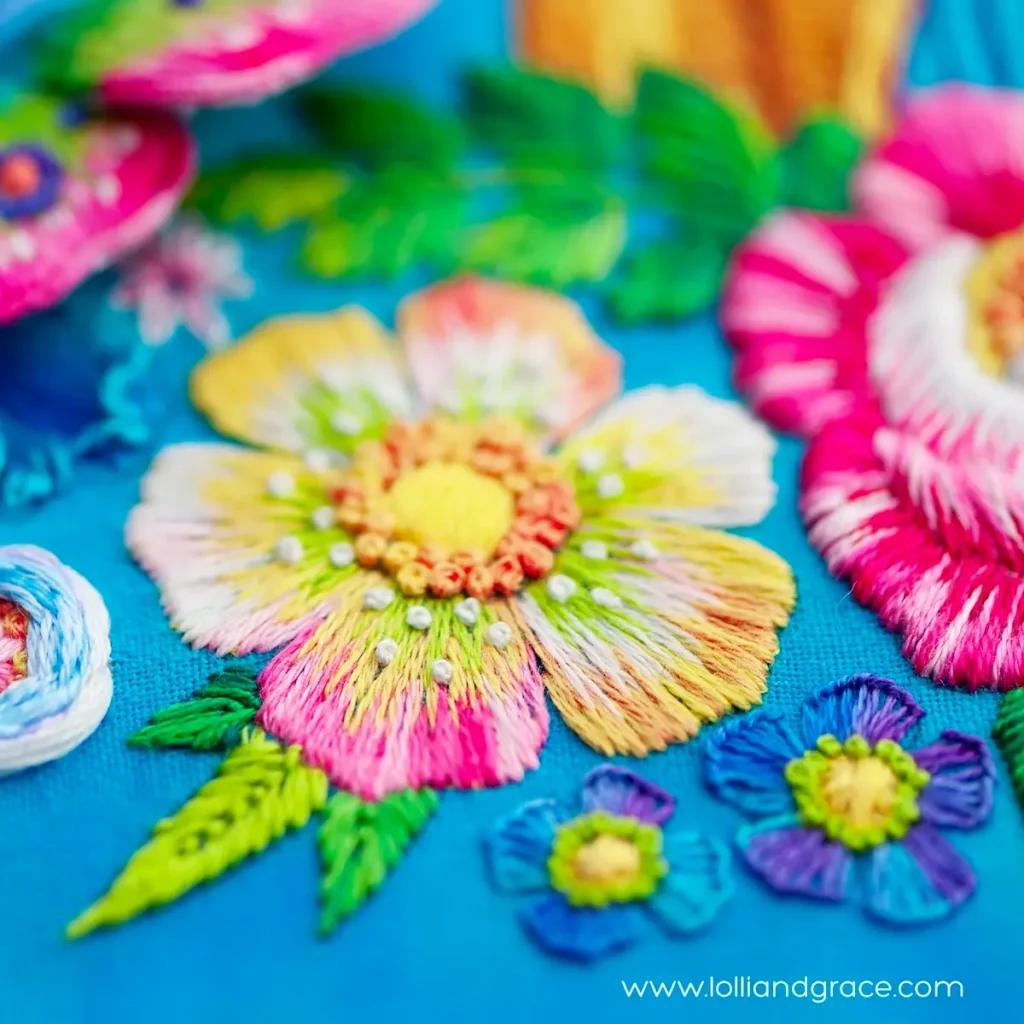
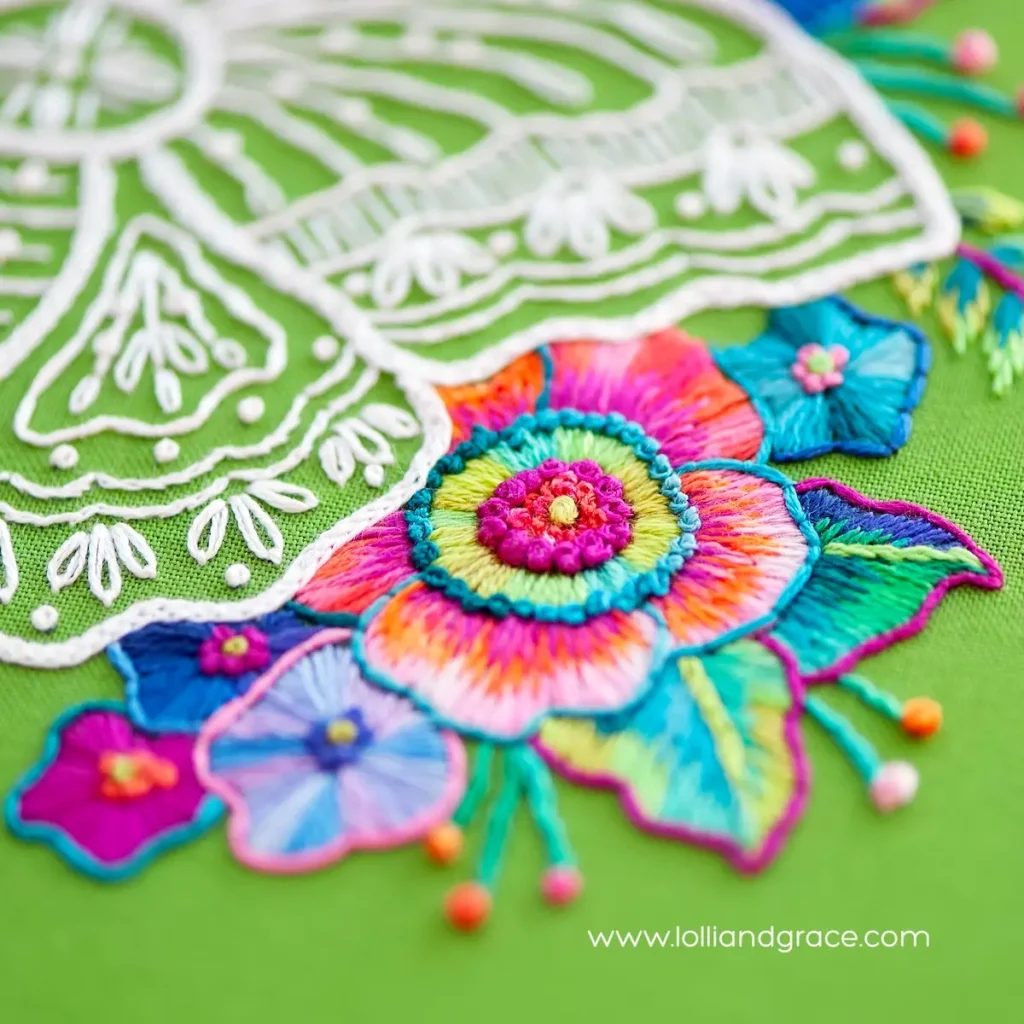
How has your work evolved over the years? Is there a common thread (pun intended!) across the years?
It’s still vibrantly colorful – that hasn’t changed. My goal is to try to put something unique or unusual in every design. Of course, there are lots of similarities between each project.
I love to try new ways to stitch something, or a new technique or texture. always, it’s gotta be colors that make me happy.
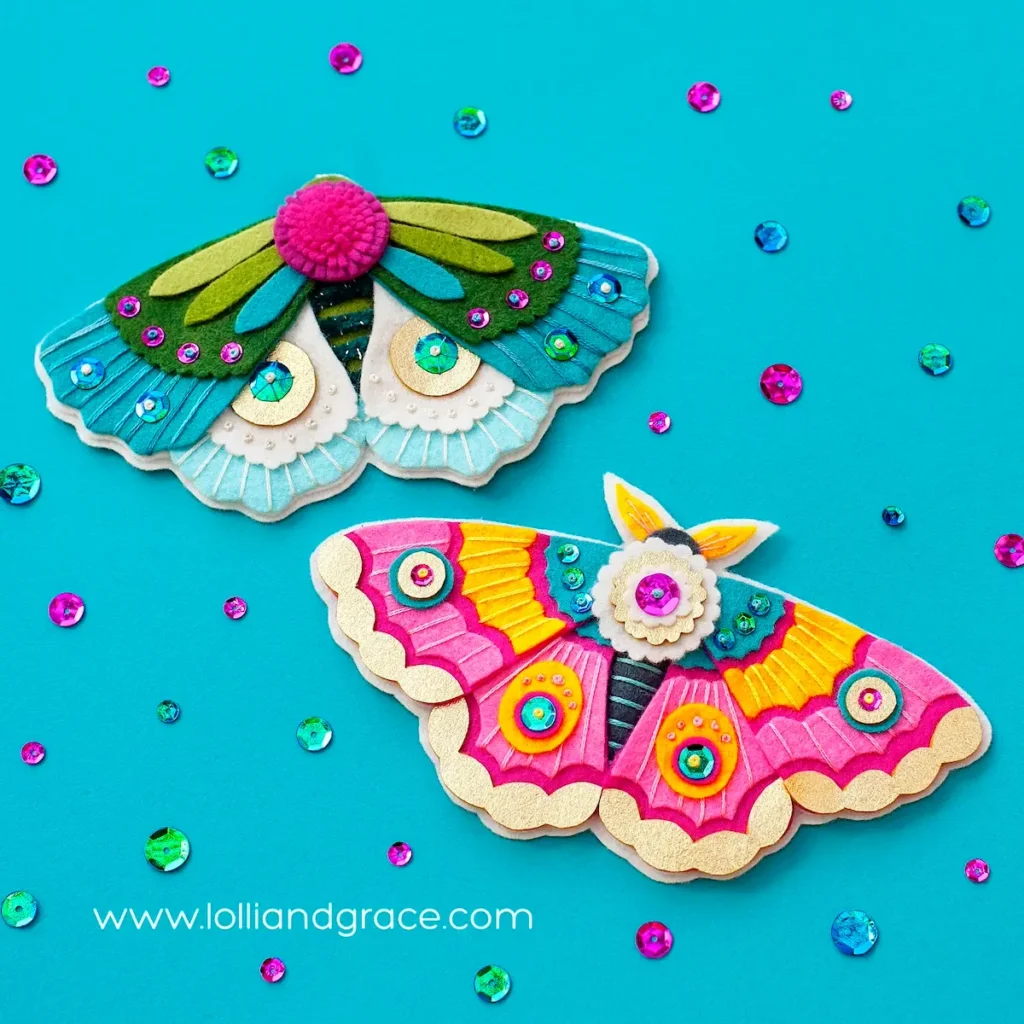

What do you do to keep yourself motivated and interested in your work?
I’m lucky that most of the time I have new ideas that are always begging to be made.
Often at the end of one project, even one that I adore, I’m ready to be done so I can start the next one.
There are times, however, when I am just burned out. My creative brain needs a rest, without constantly needing to think about how to stitch something or what colors I want to use next.
Slumps are demoralizing, and frankly a bit frightening. (I think most any creative person has felt the absence of a desire to create for a time. No one likes it.)
Usually I know I need to just turn off my creativity for a while and let myself rest. After a time I’ll slowly start perusing Pinterest again for just a hint of inspiration, and when I find something that gets me excited to start making again, I always breathe a huge sigh of relief.

Do you think that creativity is part of human nature or is it something that must be nurtured and learned?
I think it’s inherent in all of us, but it can be learned and definitely needs to be nurtured.
Thank goodness for all of the creative people that came before us, especially the grandmothers, mothers, and aunts that taught a younger generation to create/stitch. I love that so many people are encouraging boys/young men to knit/stitch/crochet now.
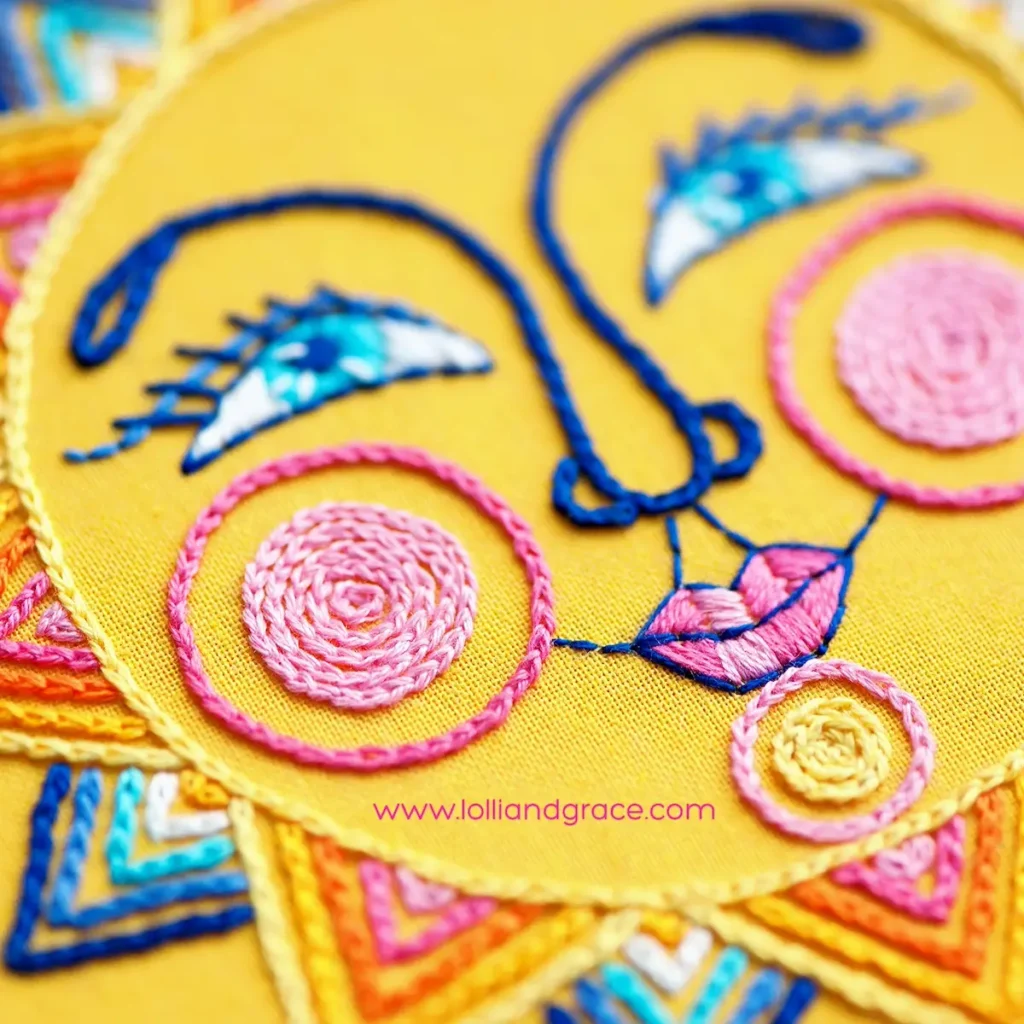

Where can people see your work?
I am on Instagram (@lolliandgrace), and I have a website at www.lolliandgrace.com. I’m also on Facebook (Lolli & Grace).
Along with all of the patterns and kits, I design and run a couple of stitch-alongs every year, and those are always VERY fun! They are one of my favorite ways to connect to my stitching community, because I have stitchers from all over the world working on one of my designs at the same time, with everyone sharing their work. I always announce these on my Instagram and on my blog, which you can find on my website (lolliandgrace.com > Blog).
Interview posted August 2025
Browse through more inspiring hand embroidery projects and stories on Create Whimsy.

